Best substitute for all-purpose flour in baking, cooking and binding
When you decide to bake with wheat flour, all-purpose is probably the first that comes to mind.
But what if you run out and need other flour substitutes?
There are many substitutes for all-purpose flour, and the best one for you will depend on what you’re using it for.

Cake flour is one of the best all-purpose flour substitutes for all recipes because it results in a more moist and tender final product. It works when baking bread, cookies, baking cakes, and also thickening.
If you need a gluten-free flour option, rice flour or almond flour are good choices.
For baking, cake flour or self-rising flour will give you better results than all-purpose flour.
And if you’re looking for a healthy alternative, whole wheat flour or spelt flour are good options.
No matter what your needs are, there’s a perfect substitute for all-purpose flour out there for you.
I’m sharing a list of the best substitutes to use instead of all-purpose flour and also sharing tips on how and when to use them.

Check out our new cookbook
Bitemybun's family recipes with complete meal planner and recipe guide.
Try it out for free with Kindle Unlimited:
Read for freeIn this post we'll cover:
- 1 What to look for in all-purpose flour substitutes
- 2 Top substitutes for all-purpose flour
- 2.1 Cake flour: best overall substitute for all-purpose flour
- 2.2 Bread flour: best substitute for all-purpose flour for baking
- 2.3 Self-rising flour
- 2.4 Almond flour: best low-carb substitute for all-purpose flour
- 2.5 Pastry flour
- 2.6 Spelt flour
- 2.7 Whole wheat flour
- 2.8 Coconut flour: best gluten-free substitute for all-purpose flour
- 2.9 Chickpea flour
- 2.10 Rice flour: best to thicken sauces
- 2.11 Brown rice flour
- 2.12 Oat flour: best high fiber substitute for all-purpose flour
- 2.13 Buckwheat flour
- 2.14 Paleo flour: best paleo-friendly substitute for all-purpose flour
- 2.15 Cassava flour
- 2.16 Rye flour: best whole grain substitute for all-purpose flour
- 2.17 Quinoa flour
- 2.18 Einkorn flour
- 2.19 Soy flour
- 2.20 Potato flour
- 3 FAQs
- 4 Takeaway
What to look for in all-purpose flour substitutes
The flour that is most frequently used in baking and cooking is all-purpose flour.
It is robust but supple and suited for most recipes because it is made from a blend of hard and soft wheat.
The drawback to all-purpose flour’s adaptability is that we usually run out of it because we use it so regularly.
Currently, it can be challenging to find all-purpose flour in supermarket stores.
When looking for a substitute for all-purpose flour, there are a lot of choices.
But if you want flour that will work just the same for your recipe, you need flour you can substitute at a 1:1 ratio.
This means that if a recipe calls for 1 cup of all-purpose flour, you can use 1 cup of the substitute flour.
Consider how the flour rises. All-purpose flour is a type of wheat flour that has been milled to have a moderate protein content.
This means it can be used for both cakes and bread. But because it doesn’t have a lot of gluten, it doesn’t rise as much as bread flour.
Also, think about the texture, flavor, and color of the flour. All-purpose flour is very versatile because it doesn’t have a strong flavor or color.
But if you’re looking for a substitute that will give your baked goods a different flavor or color, there are many options available.
All-purpose flour is finely milled but some other types of flour, like whole wheat flour, are more coarse.
This can affect the texture of your baked goods so keep that in mind when choosing a substitute product.
There are also a few other things to keep in mind when choosing your all-purpose flour substitute.
If you’re looking for a popular gluten-free flour option, make sure to choose gluten-free flour like rice flour or almond flour.
For baking, you’ll want to choose a flour with higher protein content like cake flour or self-rising flour.
And if you’re looking for a healthier alternative, whole wheat flour or spelt flour are good options.
Now that you know what to look for, let’s look at all the suitable substitutes you can use!
Top substitutes for all-purpose flour
Here’s a list of the alternative flours you can use instead of ap flour:
Cake flour: best overall substitute for all-purpose flour
The best substitute for all-purpose flour is cake flour.
Cake flour is a type of flour that is made from soft wheat. It has a very fine texture and it is bleached, which gives it a very white color.
Cake flour is perfect for making cakes because it gives them a very light and fluffy texture. It’s most often used to bake fluffy cakes, like Japanese sponge cake.
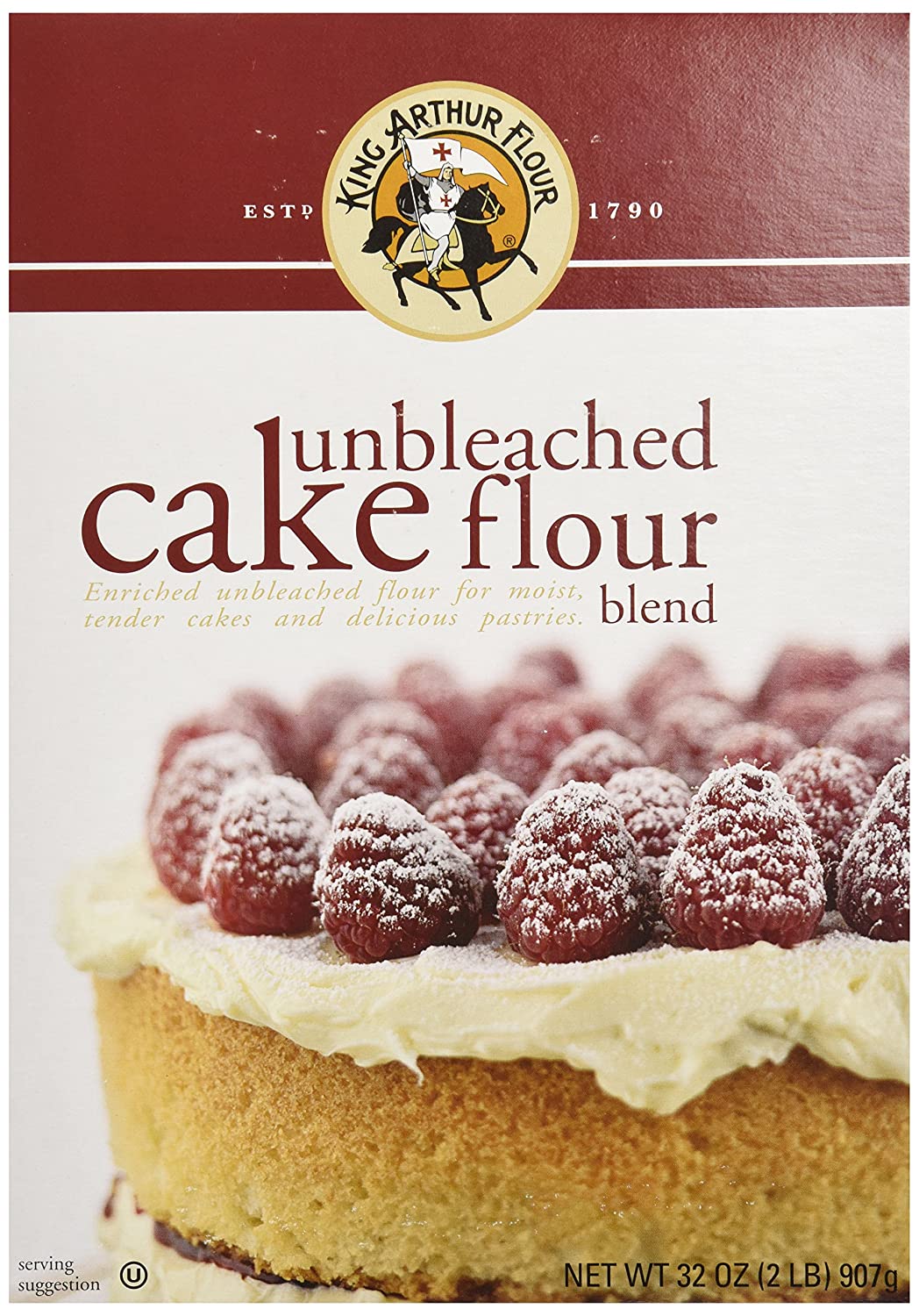
This flour can replace all-purpose flour well because it has a neutral taste.
I don’t recommend the cake flour for baking traditional bread as much though since it can become too fluffy and not dense enough.
But it’s the best choice for Asian-style bread, like milky bread.
Alternatively, you can mix 1/2 cake flour and 1/2 another flour from the list if you want a substitute for AP flour in bread recipes.
If you want to know how to substitute cake flour for all-purpose flour, the ratio is 1 cup of cake flour for every 1 1/2 cups of all-purpose flour.
Wondering what is flour in Japanese? I explain all the different names (komugiko, chûrikiko, hakurikiko) here
Bread flour: best substitute for all-purpose flour for baking
Have you wondered if you can substitute bread flour for all-purpose flour?
Well, yes, you can and the results will be just as good. The two flours are very similar, and they can be used in any recipe that calls for all-purpose flour.
I think bread flour is one of the best all-purpose flour substitutes because it’s also wheat flour, so it has a similar taste and texture.
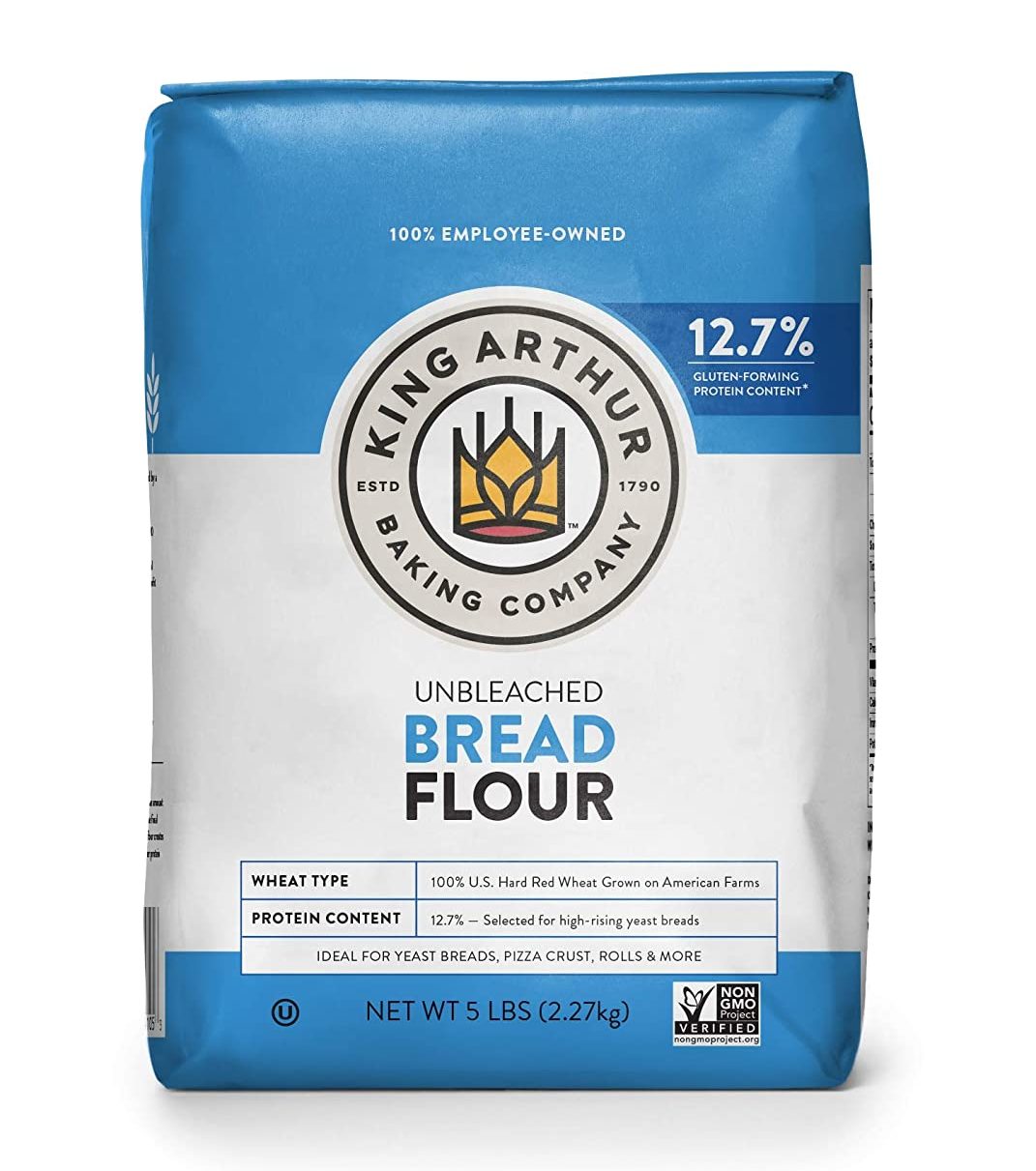
The only difference is that bread flour has a higher protein content, which makes it ideal for baking bread.
It’s also called high-gluten flour and it’s known to make baked goods like cookies chewier.
Bread flour also rises more than all-purpose flour, so if you’re looking for a flour that will give your baked goods a little more lift, this is the one to choose.
To substitute bread flour for all-purpose flour, use a 1:1 ratio. This means that if a recipe calls for 1 cup of all-purpose flour, you can use 1 cup of bread flour.
For pancakes, don’t overmix the batter or the pancakes will turn out too springy.
Also find out what is the absolute best spatula for pancakes (how could you life without it!)
Can you substitute bread flour for all-purpose flour in cookies?
The answer is yes, but keep in mind that your cookies will be a little bit more dense and chewy.
The ratio for substituting bread flour for all-purpose flour in cookies is 1 cup of bread flour for every 1 1/2 cups of all-purpose flour.
Also read my ultimate guide to different types of Japanese bread
Self-rising flour
Chefs use self-rising flour to make biscuits, quick bread, muffins, and pancakes.
Self-rising flour already contains baking powder and salt, so it will make your baked goods rise more than if you use all-purpose flour.
It’s best to use self-rising flour when you’re making quick loaves of bread, biscuits, or pancakes.
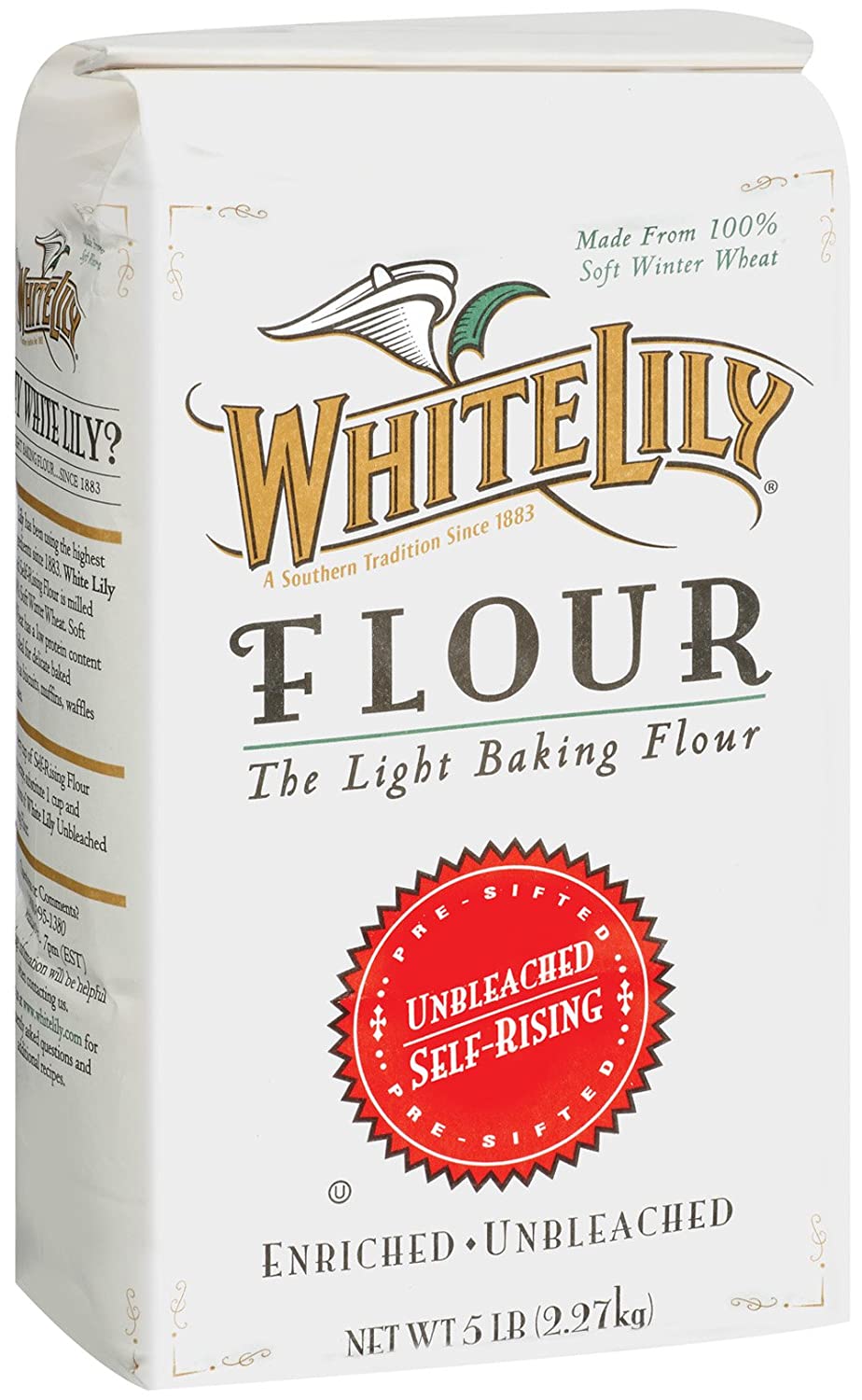
It is possible to substitute all-purpose flour with self-rising flour in a 1:1 ratio.
Just remember that if you use self-rising flour, you’ll need to reduce the amount of baking powder and salt called for in the recipe.
For example, if a recipe calls for 1 teaspoon of baking powder, you’ll only need to use 1/4 teaspoon if you’re using the self-rising flour.
Almond flour: best low-carb substitute for all-purpose flour
I think you’ve heard a lot about almond flour recently since it’s very popular. Almond flour is NOT almond meal, so don’t confuse the two.
Now, you’re probably asking “Can you substitute almond flour for all-purpose flour?”
Yes, it’s an excellent substitute for all-purpose flour.

Almond flour is made with blanched almonds that have been ground into a fine powder.
Almond flour is a great substitute for all-purpose flour if you’re looking for a gluten-free option. It has a similar texture to all-purpose flour, but it’s not as dense.
And it has a slightly nutty flavor that works well in baked goods.
Since it’s less dense than all-purpose flour, you’ll need to use a little more almond flour than all-purpose flour.
The ratio for substituting almond flour for all-purpose flour is 1:1.5, which means that if a recipe calls for 1 cup of all-purpose flour, you’ll need to use 1 and 1/2 cups of almond flour.
Almond flour is popular for low-carb recipes, so if you’re on a ketogenic diet or Paleo diet, this is the flour for you.
Almond flour is also one of the best substitutes for coconut flour and a great pantry staple
Pastry flour
Pastry flour is a type of wheat flour that is made from soft wheat. It has a lower protein content than all-purpose flour, which makes it perfect for making pastries.
Pastry flour is one of the best substitutes for all-purpose flour because it produces tender and flaky baked goods.
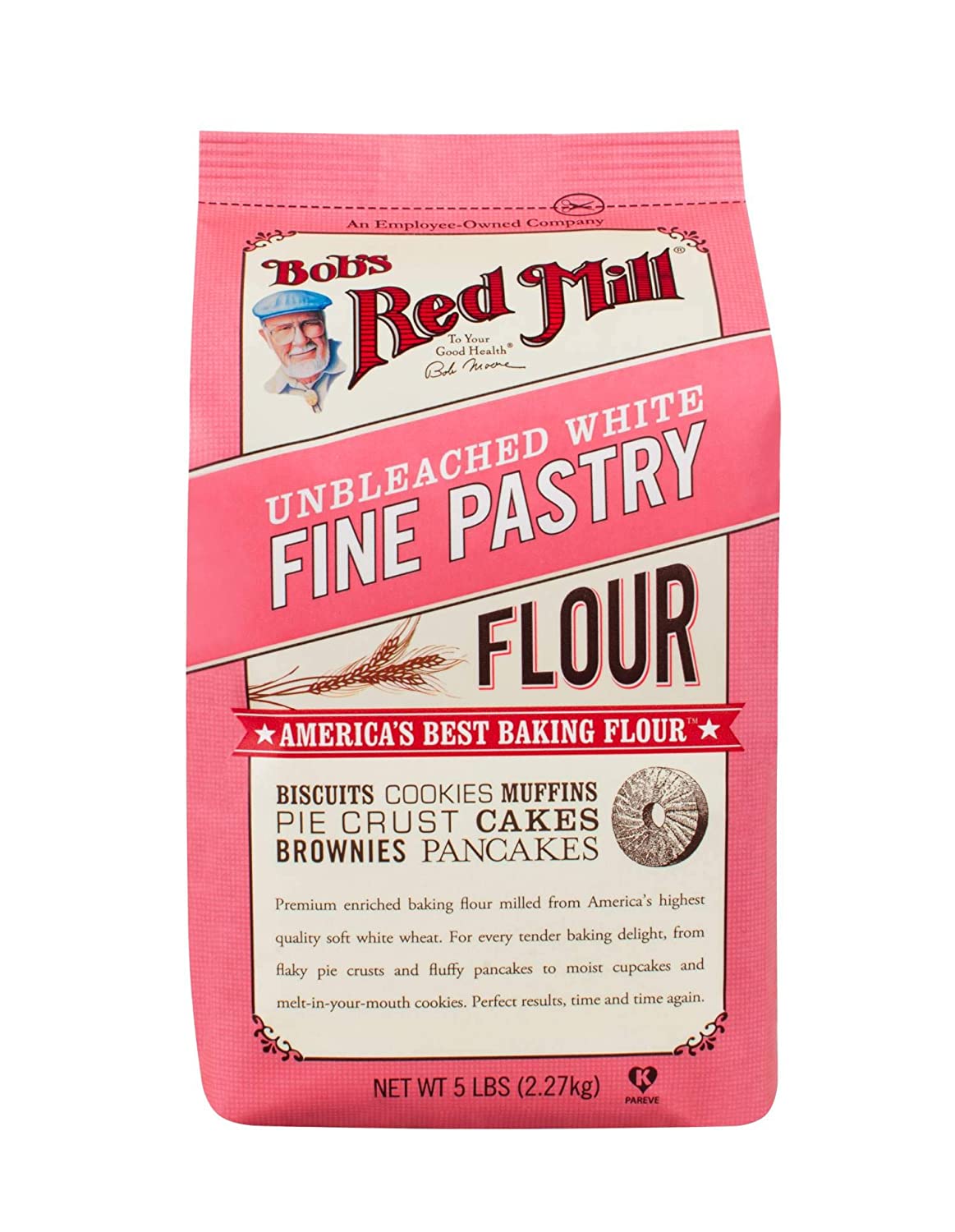
In terms of results, pastry flour doesn’t rise as much as all-purpose flour, so your baked goods will be denser. But they will also be more tender and flaky.
To substitute pastry flour for all-purpose flour, use a 1:1 ratio.
Spelt flour
If you’re looking for a healthy alternative to all-purpose flour, spelt flour is a good choice.
Spelt flour is made from an ancient grain that is closely related to wheat.
It’s a whole grain flour, so it contains all the nutrients of the grain. And it has a nutty flavor that works well in baked goods.
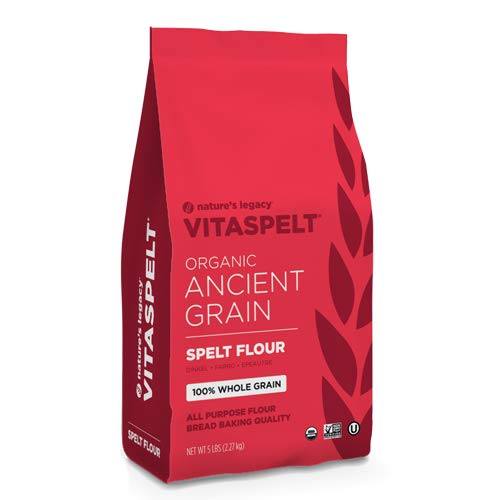
Generally, spelt flour is preferred for quick breads and muffins. It has a higher protein content than all-purpose flour, so it will make your baked goods more dense.
Its color is also darker than all-purpose flour, so keep that in mind when you’re using it as a substitute.
The ratio for substituting spelt flour for all-purpose flour is 1:1.5, which means that if a recipe calls for 1 cup of all-purpose flour, you’ll need to use 1 and 1/2 cups of spelt.
Whole wheat flour
Another healthy alternative to all-purpose flour is whole wheat flour.
Whole wheat flour is made from the entire wheat grain, including the bran and the germ.
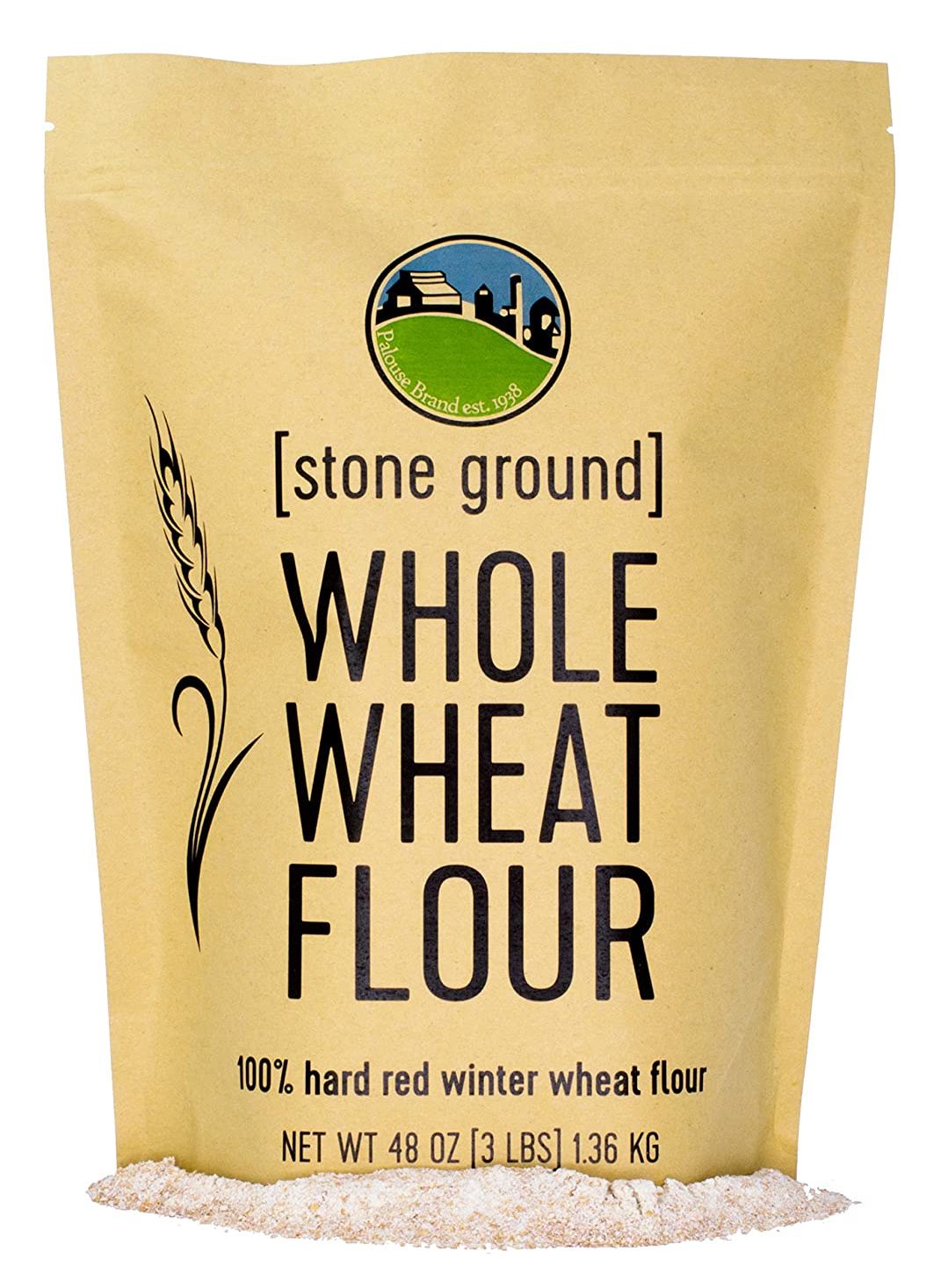
That means it has more fiber and nutrients than all-purpose flour. And it also has a hearty flavor that works well in bread and other baked goods.
The entire wheat kernel, including the rich yet tough bran, is used to make whole-wheat flour.
Most professional bakers advise using a 50/50 mixture of whole-wheat and white flour.
You can choose between bread or cake flour depending on the recipe while making bread because this sturdy grain tends to be a little more absorbent of water and liquids.
The outcomes will be nicer and tastier if you use 7/8 cup of whole-wheat flour in place of 1 cup of all-purpose flour when making quick bread and cookies.
For better hydration, rest your whole-wheat batters before baking.
Coconut flour: best gluten-free substitute for all-purpose flour
If you’re looking for a gluten-free flour option, coconut flour is a good choice.
If you have gluten intolerance, using coconut flour to replace all-purpose flour will work well in your baking without changing the taste too much.
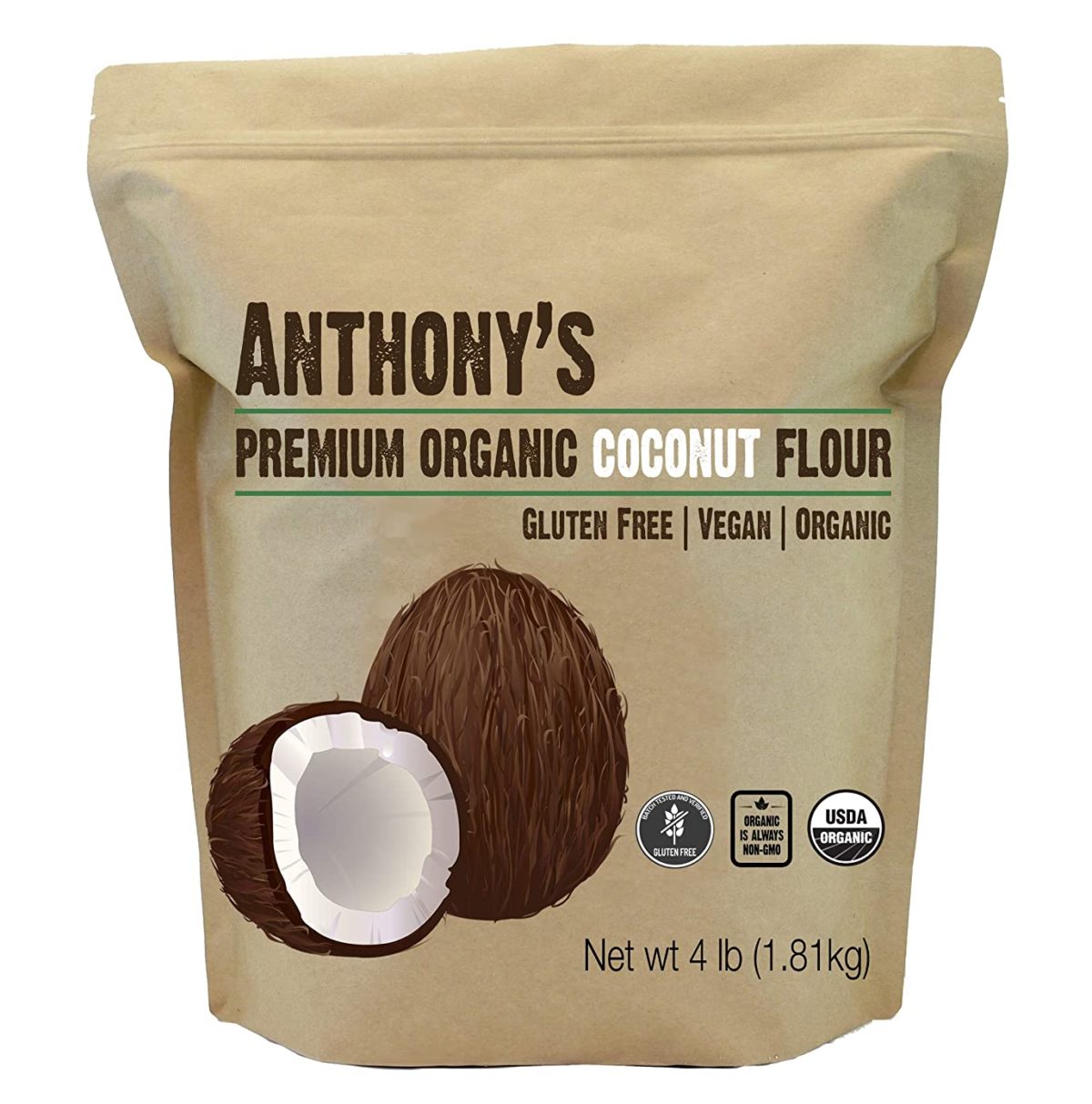
Coconut flour is made from the flesh of the coconut. It’s very absorbent, so you need to use less of it than you would all-purpose flour.
And it has a slightly sweet flavor that works well in cakes and other desserts.
Coconut flour is an excellent gluten-free alternative and it can be used for both cooking and gluten-free baking to make foods like cookies and pastries.
How to substitute coconut flour for all-purpose flour
For every 1 cup of all-purpose flour, you need to use 1/4 cup of coconut flour.
Chickpea flour
Chickpea flour is also called garbanzo bean flour and it is one of the surprisingly good all-purpose flour substitutes.
It is made from ground-up chickpeas (garbanzo beans) and it has a high protein and fiber content.
Chickpea flour also has a nutty taste which makes it a good choice for baked goods.
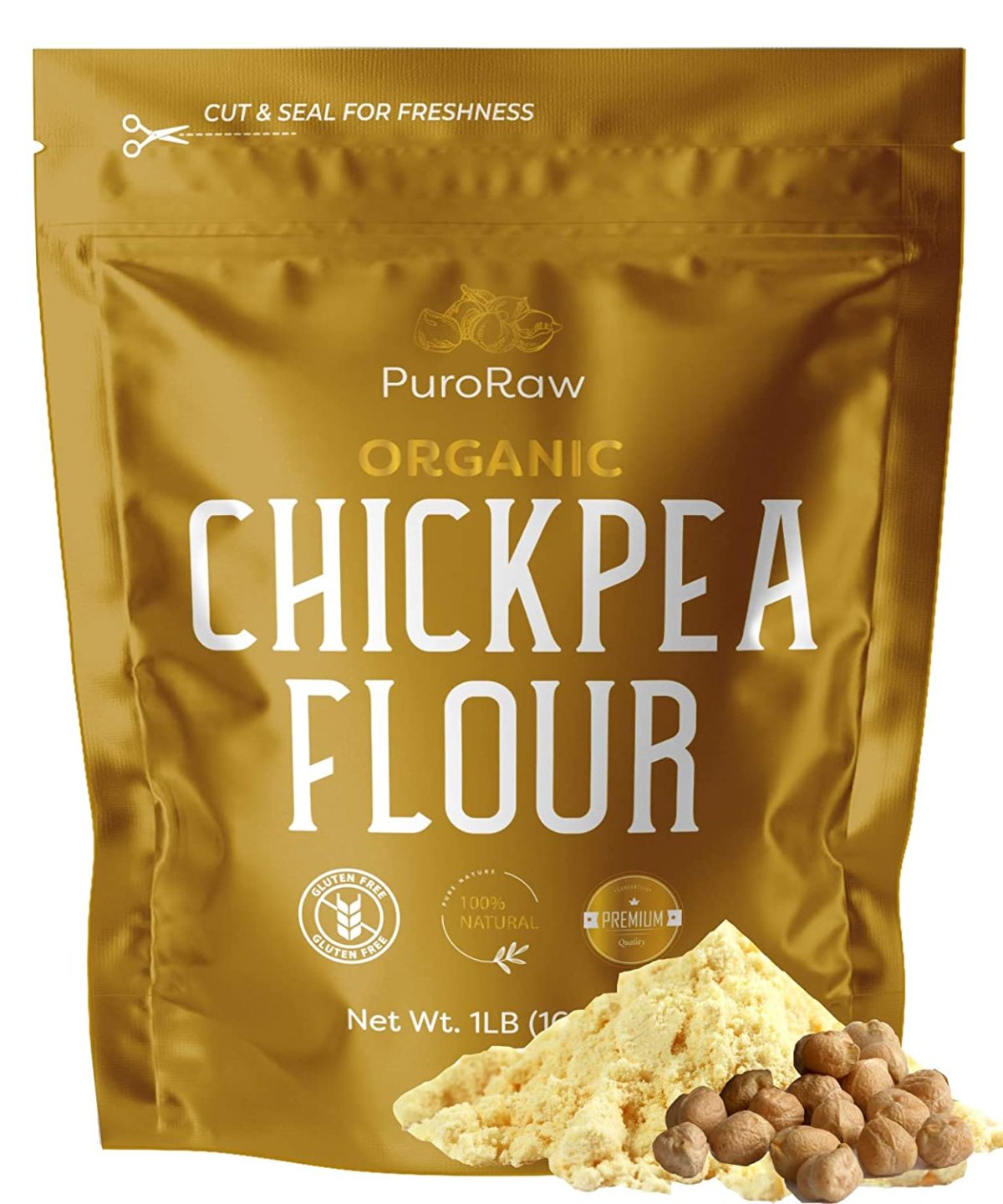
Since it’s one of the most versatile flours, you can use it in a wide variety of meals, including bread, curries, and of course, desserts.
Chickpea flour has an infinite amount of binding force, unlike many gluten-free flours.
This light yellow flour becomes a thick paste that can adhere to anything with a little water, oil, and salt.
To substitute chickpea flour for all-purpose flour, use a 1:1 ratio.
Rice flour: best to thicken sauces
If you need a gluten-free option, rice flour is one of the great gluten-free flours you can get for a pretty decent price.
Rice flour is made from, you guessed it, rice. It has a very fine texture and it’s very absorbent. That means you need to use less of it than you would all-purpose flour.
And it has a neutral flavor that works well in any baking recipe but not only.
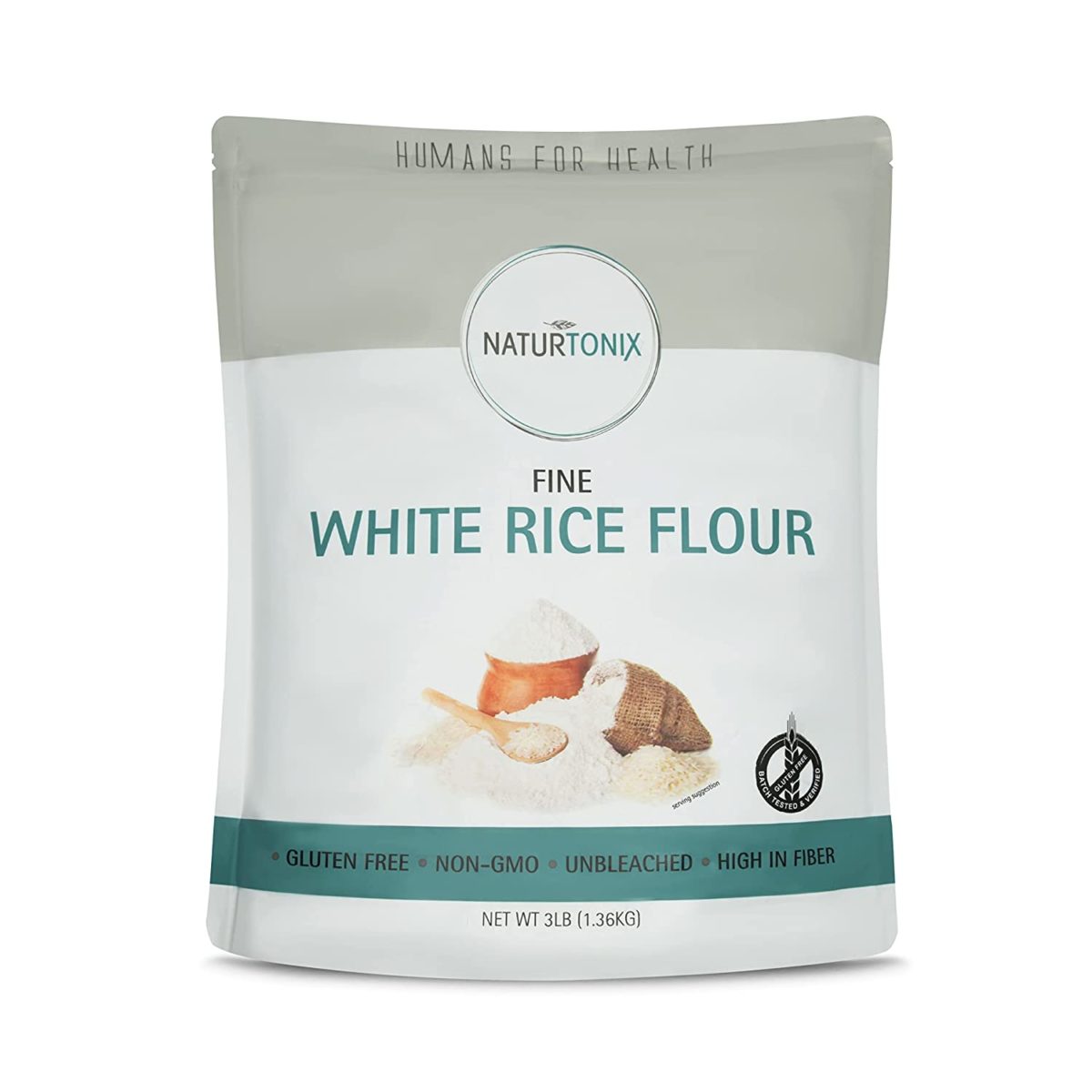
Although rice flour is very bland on its own, it is a really flexible alternative when creating Asian meals.
The common use for rice flour is to create a slurry thickener by mixing a small amount with a liquid to thicken recipes.
Rice flour is very common for making curries thicker but it can work as a thickener in all types of Western recipes too when you don’t have all-purpose flour on hand!
Although they can both be used in recipes equally, brown and white rice flours have different flavors.
For each cup of liquid that needs to be thickened, use around 2 teaspoons.
How to substitute rice flour for all purpose flour: for every 1 cup of all-purpose flour, you need to use 1/4 cup of rice flour.
Brown rice flour
Brown rice flour is made from, you guessed it, brown rice. It has a slightly nutty flavor and a coarse texture.
It is another gluten-free option and it is almost identical to regular white rice flour but it has a nuttier flavor because of the higher bran content.
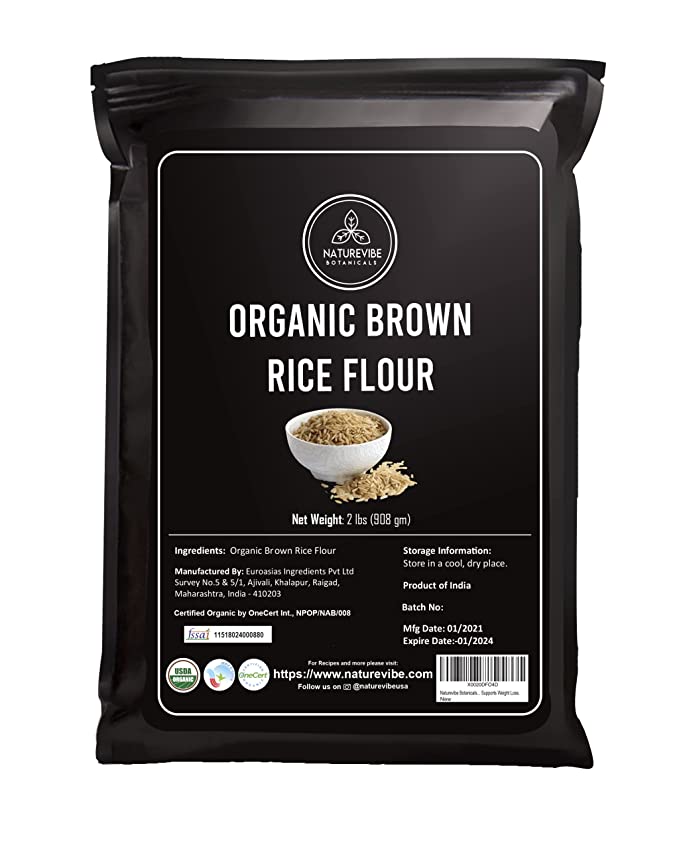
Since it’s less processed, brown rice flour also retains more nutrients than white rice flour.
You use brown rice flour the same way as white rice flour so it’s excellent for curries and as a general sauce thickener.
How to substitute brown rice flour for all-purpose flour: For every 1 cup of all-purpose flour, you need to use 1 cup of brown rice flour.
Oat flour: best high fiber substitute for all-purpose flour
If you’re looking for a gluten-free option that is also high in fiber, oat flour is a good choice.
Oat flour is made from ground oats. It has a slightly sweet flavor and a dense texture.
Since it’s high in fiber and gluten-free, oat flour is a good choice for people with digestive problems.

You can use oat flour in any recipe that calls for all-purpose but its color and flavor will change the final product.
The texture of baked goods made with oat flour will be denser than with all-purpose flour.
How to substitute oat flour for all-purpose flour: 1:1 ratio, so for every 1 cup of all-purpose flour, you need to use 1 cup of oat flour.
If you have a hard time finding oat flour, know that you can also make it yourself using regular oats:
Buckwheat flour
Buckwheat flour is a good choice if you’re looking for a gluten-free and healthy option for substituting all-purpose flour.
Buckwheat flour is made from, you guessed it, buckwheat. It has a nutty flavor and a dense texture.
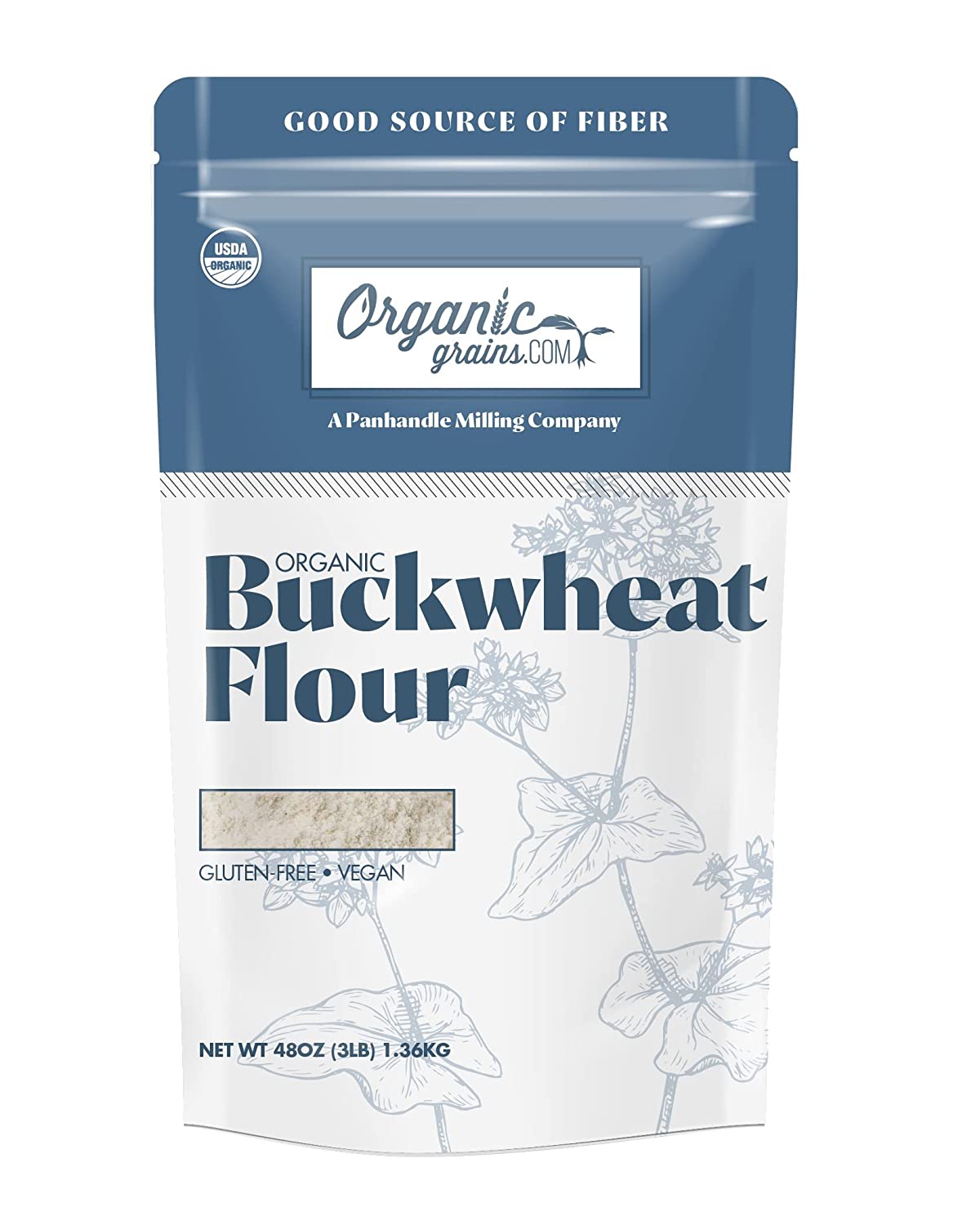
What’s special about buckwheat flour is that it’s high in protein and fiber.
That makes it a good choice for people who are looking to add more protein to their diet. Also, it can be used instead of all-purpose flour in most recipes.
The only thing you need to keep in mind is that buckwheat flour doesn’t contain gluten so the final product will be more crumbly.
To avoid that, you can mix it with other gluten-free flours like rice flour or tapioca flour.
How to substitute buckwheat flour for all-purpose flour: For every 1 cup of all-purpose flour, you need to use 1 cup of buckwheat flour which means a 1:1 ratio.
Paleo flour: best paleo-friendly substitute for all-purpose flour
Paleo flour is a good choice for people who are looking for a paleo-friendly option to substitute all-purpose flour.
This flour is made from a combination of flour like almond flour, coconut flour, tapioca flour as well as some arrowroot starch.
It has a slightly sweet flavor and a dense texture.
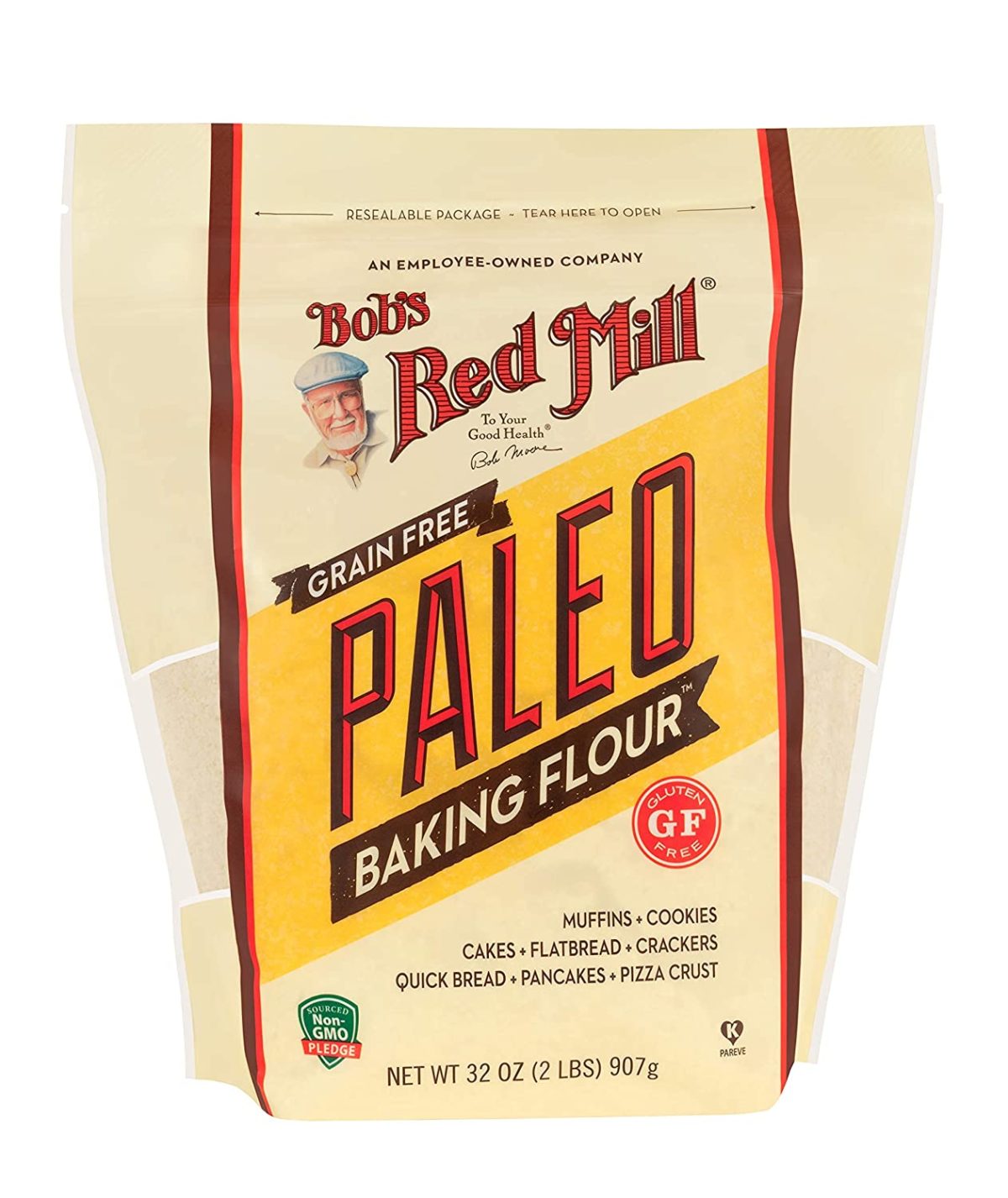
You can use paleo flour in any recipe that calls for all-purpose flour but the final product will be denser and have a slightly different flavor.
How to substitute paleo flour for all-purpose flour: For every 1 cup of all-purpose flour, you need to use 1 cup of paleo flour, so a 1:1 ratio.
Cassava flour
Cassava flour is a good all-purpose flour substitute if you’re looking for a gluten-free and healthy option.
Cassava flour is made from cassava root. It’s very absorbent and it has a slightly sweet flavor.
You can use this flour to make a wide variety of recipes, including bread, cakes, and even pancakes.
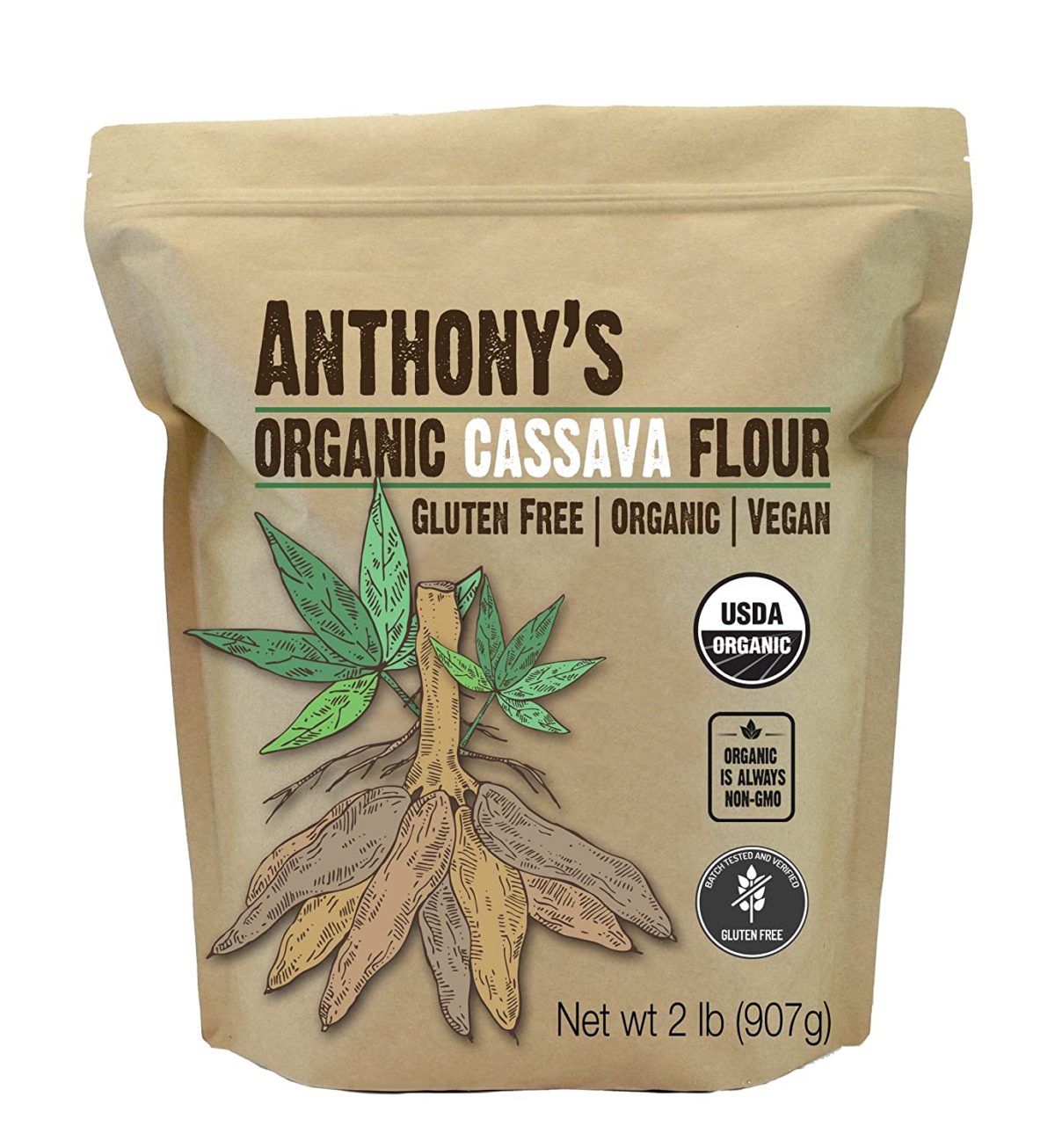
How to substitute cassava flour for all-purpose flour: For every 1 cup of all-purpose flour, you need to use 1/4 cup of cassava flour.
Tapioca flour
You can use tapioca flour as a substitute for all-purpose flour if you’re looking for a gluten-free option.
Tapioca flour is made from the starchy part of the cassava root and it has a slightly sweet flavor.
This flour is very absorbent so it’s excellent for thickening sauces and soups. You can also use it to make bread, pancakes, and cakes. Tapioca flour becomes glossy and shiny when used as a thickener.
Keep in mind that tapioca flour doesn’t contain gluten so the final product will be more crumbly.
The substitution ratio is 1:1 so for every 1 cup of all-purpose flour, you need to use 1 cup of tapioca flour.
Rye flour: best whole grain substitute for all-purpose flour
It’s possible to substitute rye flour for all-purpose flour but keep in mind that the final product will have a different flavor and texture.
Rye flour is made from rye grain and it has a strong flavor. It’s also darker in color than all-purpose flour.
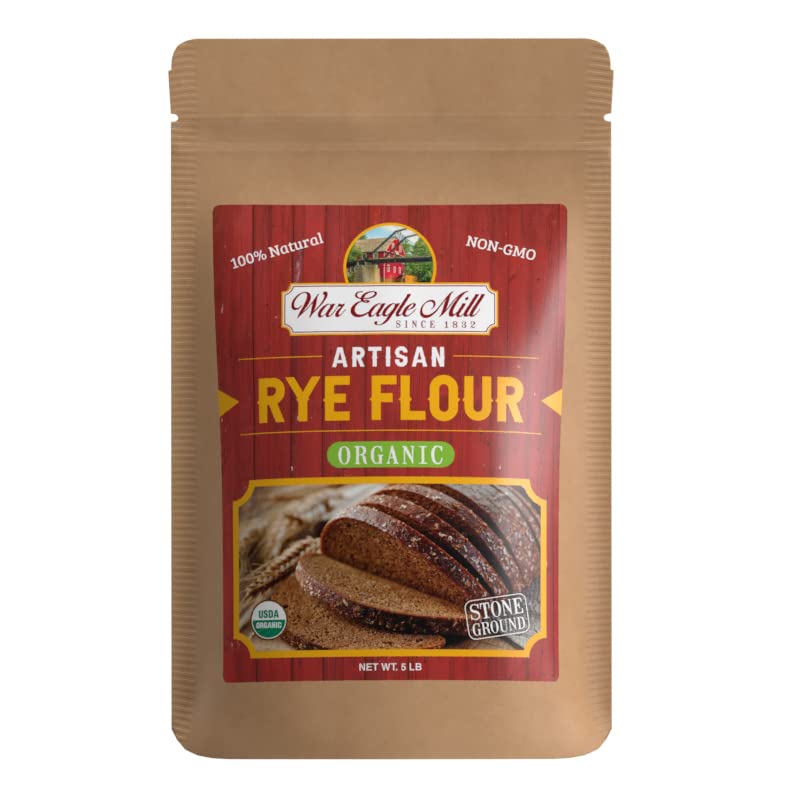
(view more images)
Rye flour is also an excellent whole grain flour substitute which means it has more fiber and nutrients than all-purpose flour.
The texture of baked goods made with rye flour will be denser and grainy.
So, if you’re making a vanilla sponge cake, the rye flour isn’t the best option because it will change the yellow color to a brown and that might not work for your cake.
How to substitute rye flour for all-purpose flour: For every 1 cup of all-purpose flour, you need to use 1 cup of rye flour instead.
Quinoa flour
Another good all-purpose flour substitute is quinoa flour.
This flour is made from grinding quinoa grains and it’s a good source of protein and fiber.
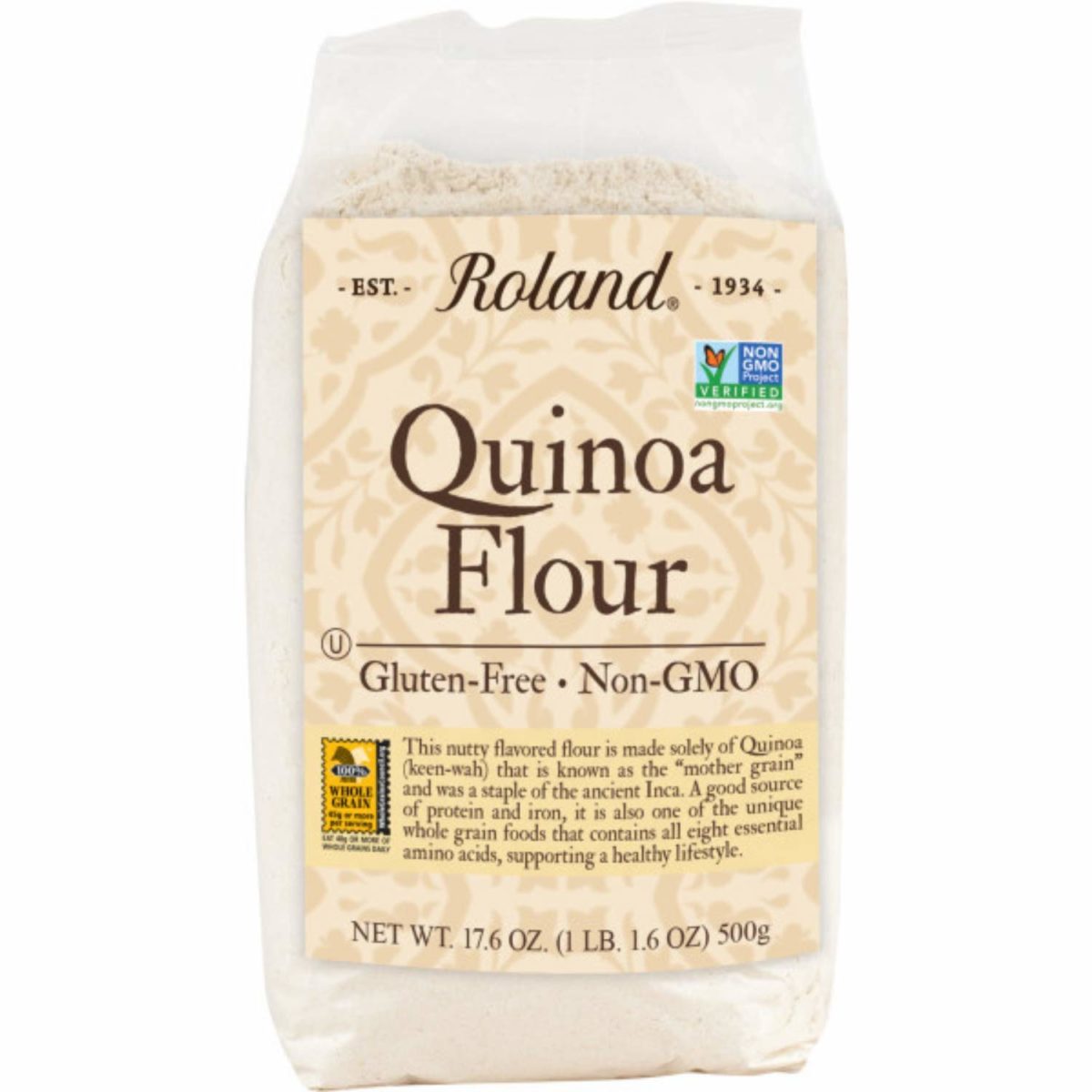
Quinoa flour has a nutty flavor and it’s slightly sweeter than all-purpose flour.
Keep in mind that quinoa flour doesn’t contain gluten so the final product will be more crumbly.
The substitution ratio is 1:1 so you can use it the same way as you do all-purpose flour.
Einkorn flour
Wondering what einkorn flour is?
Einkorn flour is made from a type of wheat that’s been around for over 10,000 years. This plant has one grain on each stem only and survives in hot, dry climates.
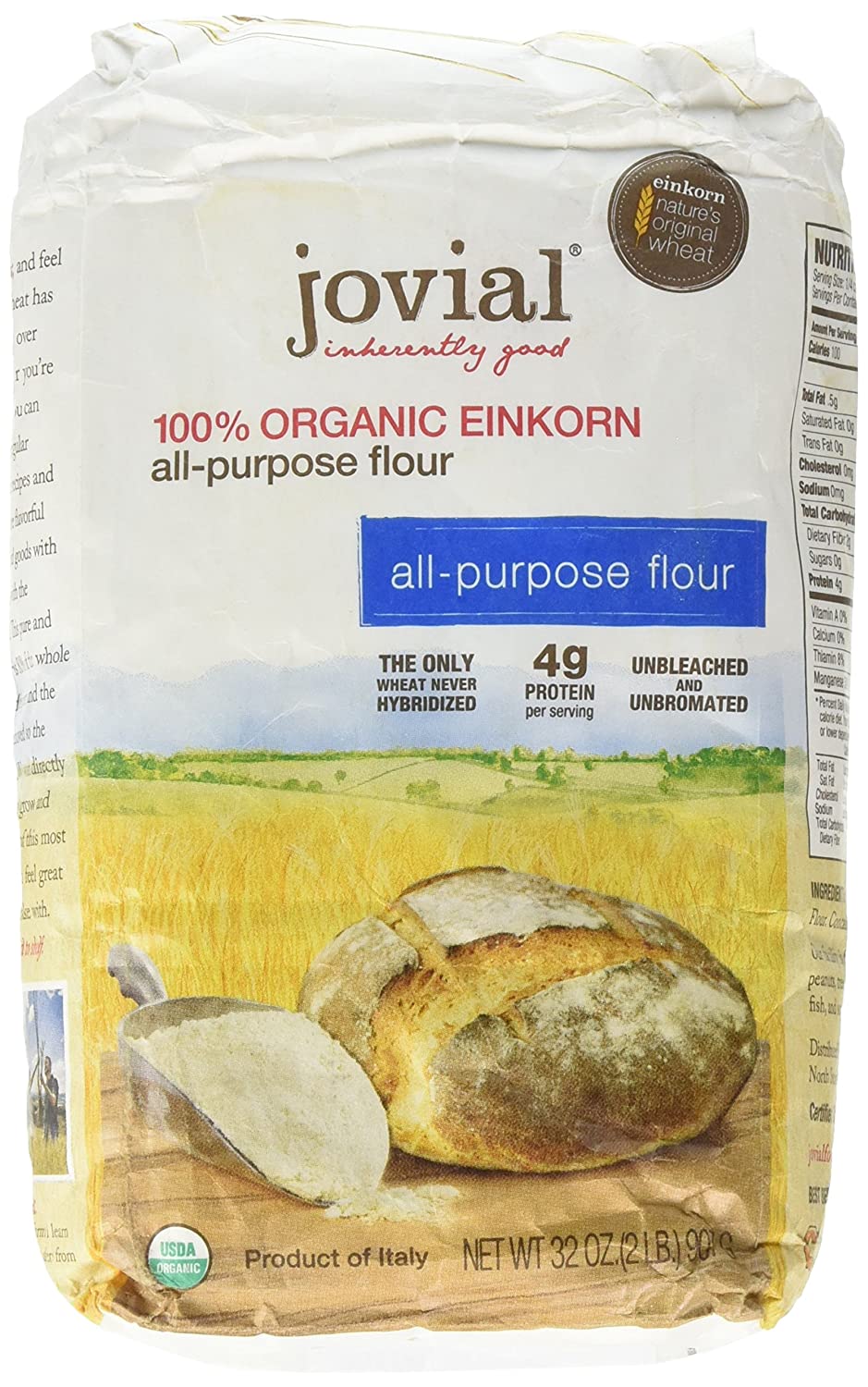
It’s possible to substitute einkorn flour for all-purpose flour but keep in mind that it doesn’t contain gluten so the final product will be more crumbly.
The substitution ratio is 1:1 so for every 1 cup of all-purpose flour, you need to use 1 cup of einkorn flour.
It’s a good all-purpose flour substitute but it doesn’t have gluten so it’s not suitable for all recipes and it’s also more expensive since it’s harder to find.
Soy flour
You can use soy flour as a substitute for all-purpose flour if you’re looking for a gluten-free option.
Soy flour is made from grinding soybeans and it’s an excellent source of protein. It’s popular in Asian cuisine, especially in China.
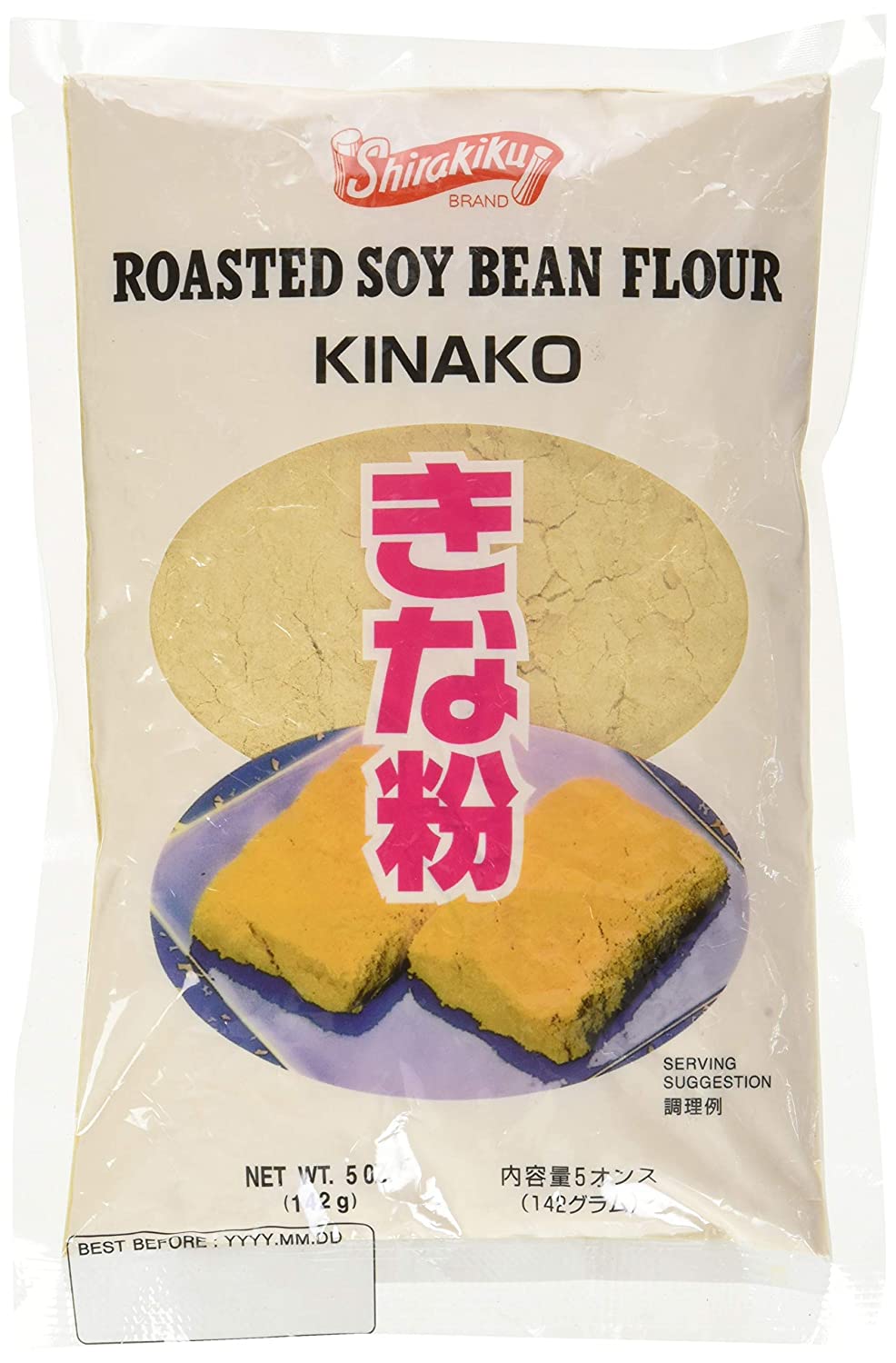
The final product will be more dense and chewy when using soy flour.
How to substitute soy flour for all-purpose flour: the ratio is 3/4 cup of soy flour for each cup of all-purpose.
Potato flour
Potato flour is made from grinding whole potatoes and it’s a good source of fiber.
This flour has a granulated texture and it’s used to thicken sauces and stews.
You can also use it to make pancakes, waffles, and bread.
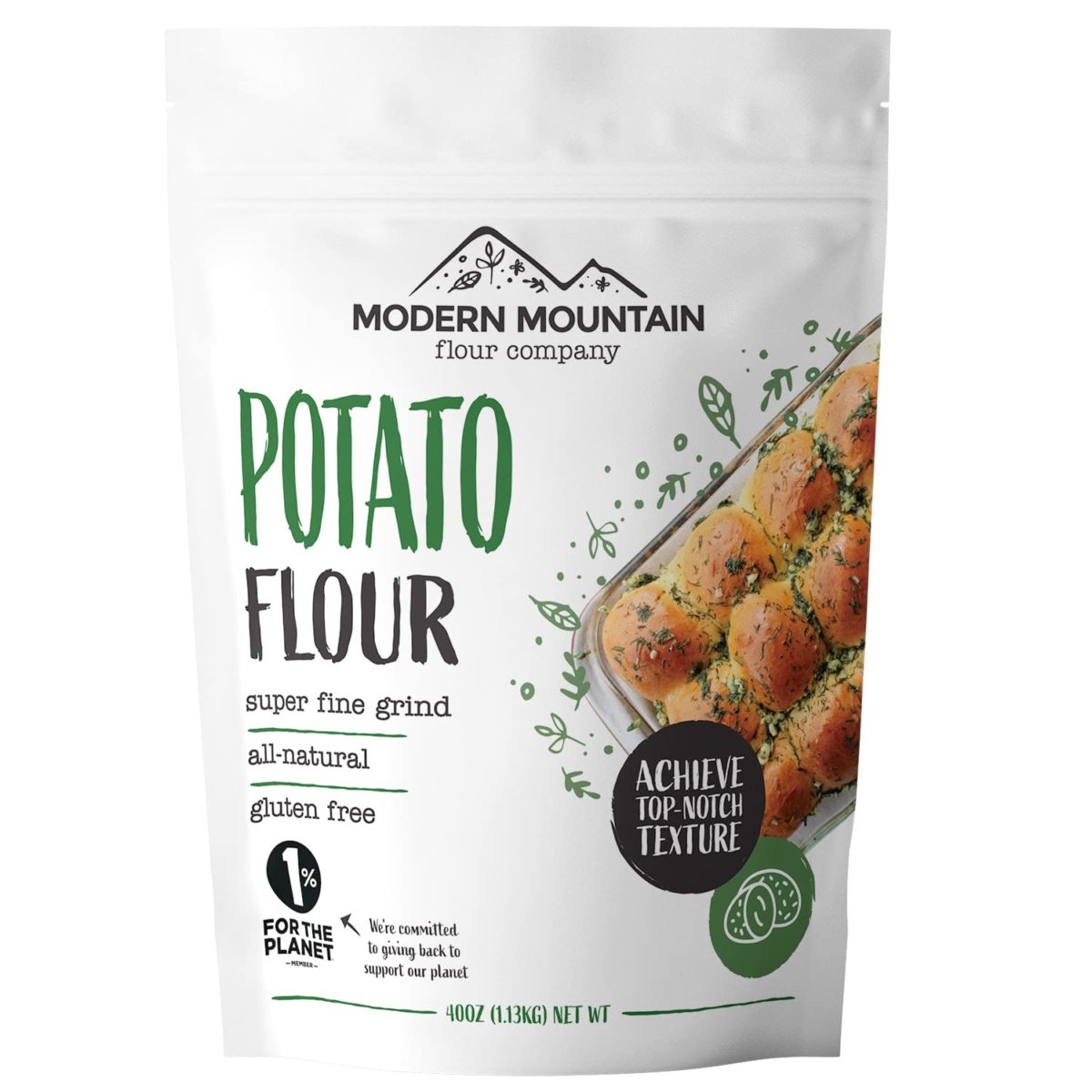
However, potato flour isn’t ideal for cakes or cookies because it will make them dense and heavy.
The substitution ratio is 1:1 so for every 1 cup of all-purpose flour, you need to use 1 cup of potato flour.
FAQs
Since there’s a lot of confusion around flour substitutes, we’ve decided to answer some of the most frequently asked questions.
Are nut flours good substitutes for all-purpose flour?
All nut flours are produced by grinding the residue left behind after the oil has been extracted, whereas nut meals are produced by grinding the entire nut.
Most nut flours are interchangeable in most recipes so yes, most nut flours are great substitutes for all purpose flour.
Nut flours are usually higher in calories though but the fat content is mostly unsaturated fat which is the good kind of fat.
You probably hear people use the term “healthy fats” and that’s what nut flours add to your food.
Additionally, they’re a good source of protein, fiber, and vitamins so they’re a great way to add nutrients to your diet.
What’s the difference between coconut flour and other nut flours?
The main difference between coconut flour and other nut flours is that coconut flour is made from the meat of the coconut whereas other nut flours are made from the residue left behind after the oil has been extracted.
Coconut flour is also drier and more absorbent than other nut flours.
That means you need to use less coconut flour than other nut flours when substituting it for all purpose flour.
What is a healthy substitute for all-purpose flour?
There are a few different types of flour that can be used as substitutes for all-purpose flour. These include:
- Whole wheat flour
- Almond flour
- Coconut flour
- Buckwheat flour
- Oat flour
- Cassava flour
Each of these flours has unique properties that make them a good substitute for all-purpose flour.
It really depends on what you’re looking for in a substitute as to which one would be the best for you.
For example, if you’re looking for a gluten-free option, then oat flour or buckwheat flour would be a good choice.
If you’re looking for a low-carb option, then almond flour or coconut flour would be a good choice.
What is the best all-purpose flour substitute for pancakes?
Out of ap flour? Self-rising flour, oat flour, and rice flour are all good substitutes.
With self-rising flour, your pancakes will get thicker and fluffier.
For a gluten-free option, you could try using a 1:1 ratio of buckwheat flour and all-purpose flour.
If you want a healthy option, whole wheat flour would be a good choice too.
Takeaway
There are a variety of flours that can be used as substitutes for all-purpose flour.
The best substitute for all-purpose flour depends on what you’re making but cake flour works for almost any recipe.
It has a similar texture, color, and flavor to all-purpose flour but it’s a bit finer and has less gluten.
Since it has a neutral bland flavor, it doesn’t alter the taste of your recipe.
But as you can see, there are plenty of other substitutes that work just as well. So experiment and find the one you like best!
Read next: The Best Flour Sifter Reviews for your baking recipes
Check out our new cookbook
Bitemybun's family recipes with complete meal planner and recipe guide.
Try it out for free with Kindle Unlimited:
Read for freeJoost Nusselder, the founder of Bite My Bun is a content marketer, dad and loves trying out new food with Japanese food at the heart of his passion, and together with his team he's been creating in-depth blog articles since 2016 to help loyal readers with recipes and cooking tips.
